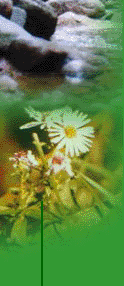- Highly decomposed plant and animal residue that is part of the soil is called
|
- Mottling in soil horizons is caused by
|
- The pH of soil can be raised by the addition of?
|
- What is a ped?
|
- Which is not a factor of soil erosion?
|
- Three types of soil erosion by water from LEAST dramatic to MOST dramatic are
|
- A hydric soil
|
- Movement of water through soils is important for the
|
- The O horizon is most likely found:
|
- Cracks in the soil are caused by variations in moisture and particles of
|
- Prismatic, blocky, and platey are terms used to describe which soil characterisitics?
|
- Which of the following chemical reactions would most likely result in a mottled appearance in soil?
|
- Which of the following types of erosion does not belong with the others?
|
- What charge is carried by a clay particle?
|
- The crop leaving the least residue on the soil surface is
|
- Which of the following influences soil wetness?
|
- The relative proportions of sand, silt, and clay in a soil mass is referred to as
|
- A water table in the soil refers to:
|
- Two factors which influence soil formation are living organisms and topography. Three other factors which influence soil
formation are:
|
- Fine and medium sized sand particles move mainly by this process. The particles are lifted only a short distance into
the air and then fall back to the ground to dislodge more soil. This process is know as_______.
|




